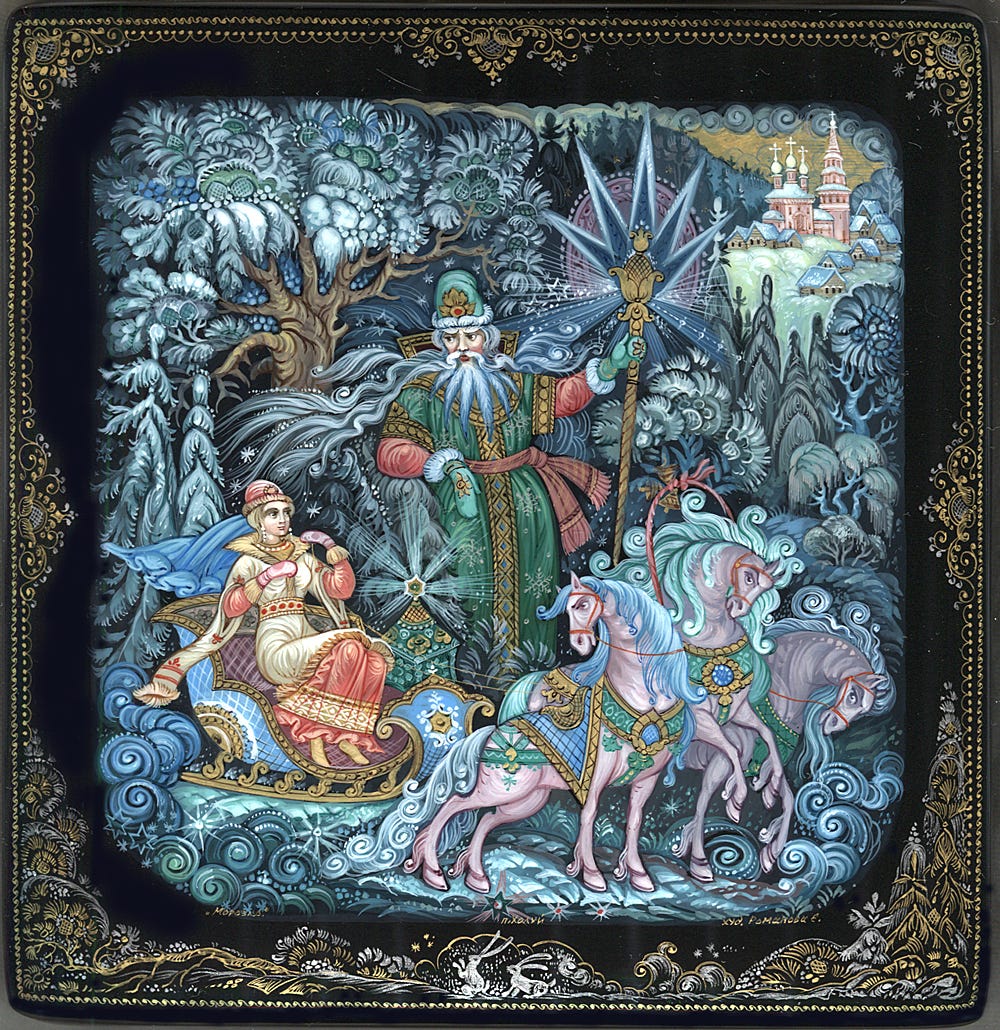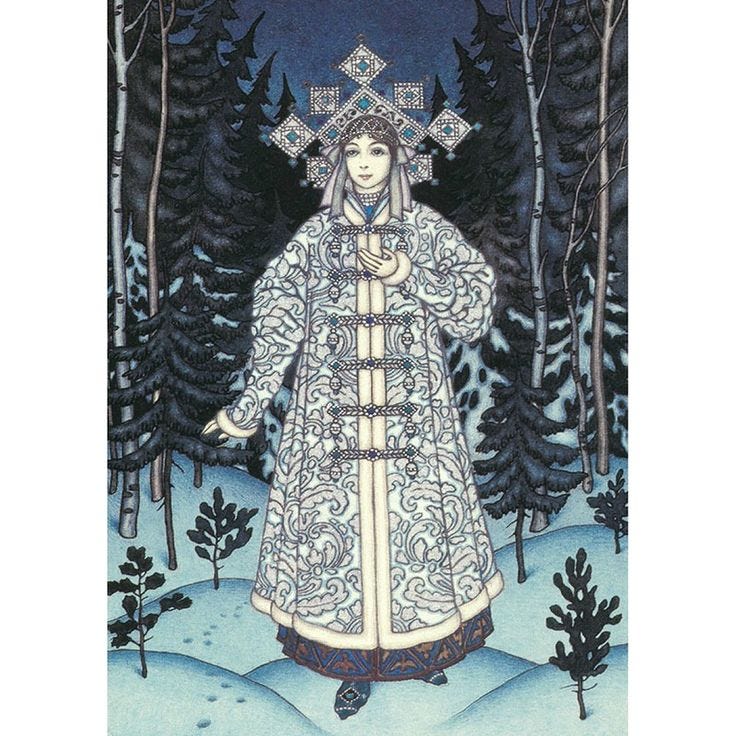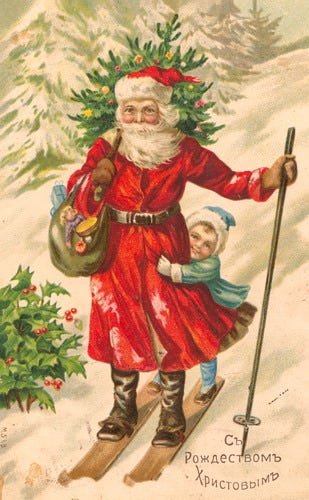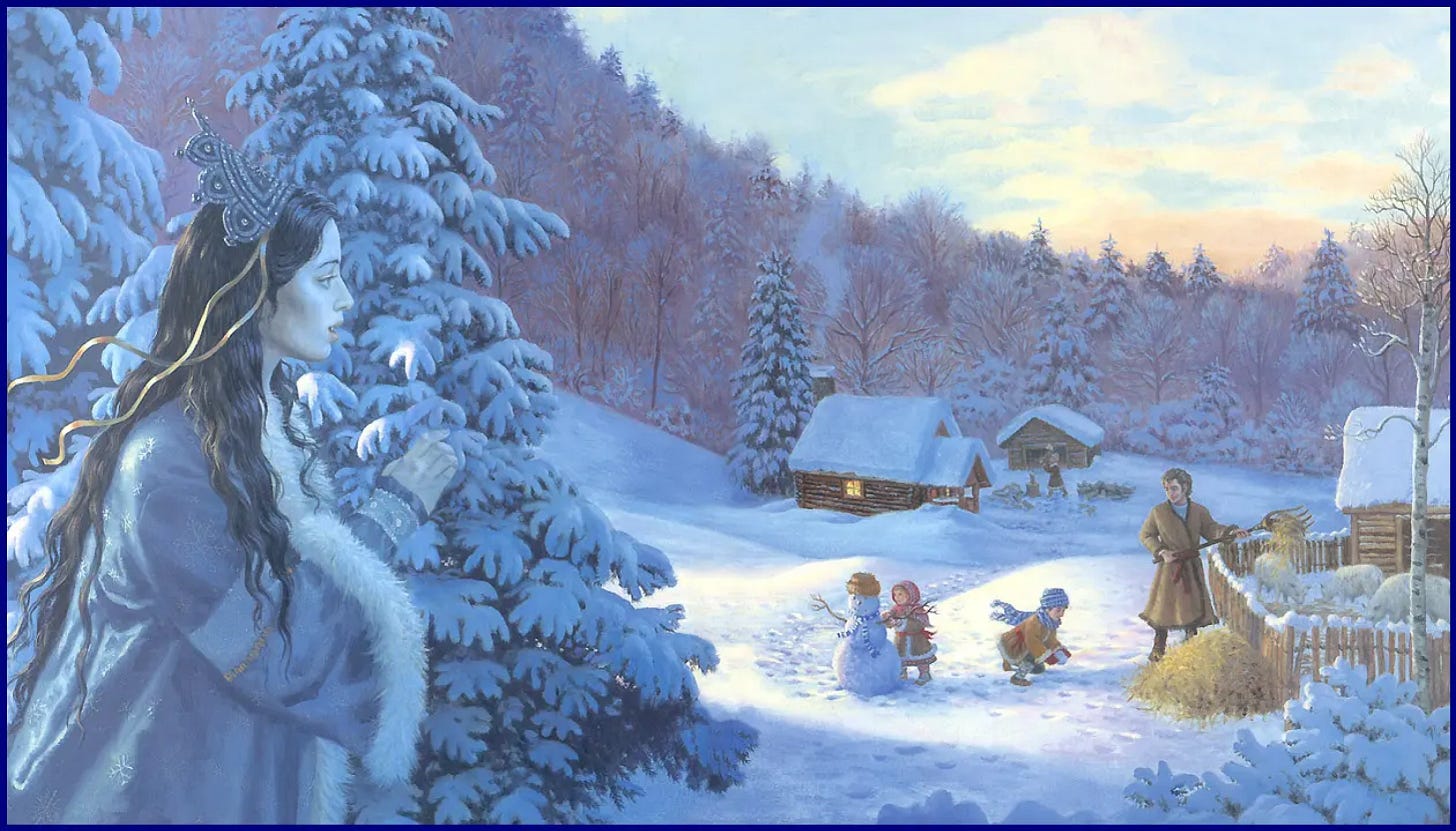Dedushka Moroz and his skeletons
The Complex History and Modern Perceptions of Ded Moroz and Snegurochka.
Let’s talk about Ded Moroz and Snegurochka—two of the most iconic characters you’ll see during Russian New Year celebrations. They’re as much a part of the holiday as Olivier salad, but have you ever wondered where they really come from? Their story is a mix of folklore, Soviet propaganda, and a dash of unsettling undertones.
Many people think Ded Moroz (Grandfather Frost) and Snegurochka (the Snow Maiden) are rooted in ancient Slavic mythology, but their modern versions are largely Soviet creations. Ded Moroz—as we know him today—rose to prominence in the late 1930s as the perfect symbol of socialist childhood.
But here’s the twist: Ded Moroz wasn’t entirely invented by the Soviets. He existed long before that in Russian culture, originating from Slavic pagan traditions. Back then, he was a fearsome frost spirit who demanded offerings to protect families during brutal winters. In the 1920s, Soviet authorities banned him for being too "religious," but by 1935, they brought him back, rebranding him as a jolly, secular New Year’s figure. By 1937, Ded Moroz was the life of the New Year’s party, fitting perfectly into Soviet ideology.
Then there’s Snegurochka. If you grew up with her, you probably thought she was sweet and harmless. But looking closer, her story raises some eyebrows. Her origins lie in Russian folklore, where she’s a girl made of snow who comes to life. In many stories, Snegurochka is a symbol of purity and innocence, living in harmony with nature. However, she longs for the warmth of human connection, which ultimately leads to her tragic fate. In one well-known version, her heart melts when exposed to the warmth of love or a spring bonfire, emphasizing her ethereal and transient nature. This tale was popularized by Alexander Ostrovsky’s 1873 play "The Snow Maiden," later turned into an opera by Nikolai Rimsky-Korsakov. During the Soviet era, Snegurochka was reimagined as Ded Moroz’s granddaughter, meant to make him less intimidating for children.
Growing up, I’ve never questioned this duo, but now, as an adult and a survivor of sexual harassment from my own grandfather, it’s hard for me to see this union as innocent. Their dynamic raises some uncomfortable questions. Adding to the strangeness, modern portrayals often transform Snegurochka into an attractive young woman, a far cry from her original depiction as a child.
If we rewind further, Ded Moroz’s story gets even more colorful. Known by names like Moroz, Karachun, Treskun, and Zyuzya (Belarus), he appeared in different forms across regions. Sometimes, he was a terrifying frost spirit; other times, a drunken old man with a long beard who brought the cold. To keep him happy, families left food offerings. The Bolsheviks later tweaked these stories, turning him into a personification of winter and cold, but the truth is, you won’t find much about him in folklore before the 19th century. By then, writers like V. Odoevsky and N. Nekrasov had already turned him into a character who rewarded the good and punished the bad.
Some theories claim Snegurochka symbolizes human sacrifices made by early pagans to appease the winter spirits. Does that sound plausible? Maybe. Have I found any research that proves it? Honestly, no.
Here’s the thing: Ded Moroz and Snegurochka are complicated. They’re beloved staples of New Year’s celebrations, but their backstory combines ancient traditions, Soviet reinvention, and some questionable modern trends. By recognizing their dual nature, we can appreciate them for what they are while remaining mindful of the cultural and historical forces that shaped them. The next time you encounter them at a party, you'll understand that their story runs much deeper than it appears.












I never really trusted any "older man + young girl" combos in popular culture they just give me such an ick. Even if they're described as "family members" or "friends" or anything borderline innocent, it still is kind of messed up, why can't it be gandpa + grandson, why does it always have to be an old man and a girl? Never liked Lolita, or "Léon" either, you can't tell me an older man can be friends with a young girl, unless he's her father.
I believe Elka started to appear in decor after Polish intervention around 1598, then Peter the Great mandated the use of pine and then Soviet union sort of cemented it with the "community Elka", where people would gather together to dance, celebrate the new year etc